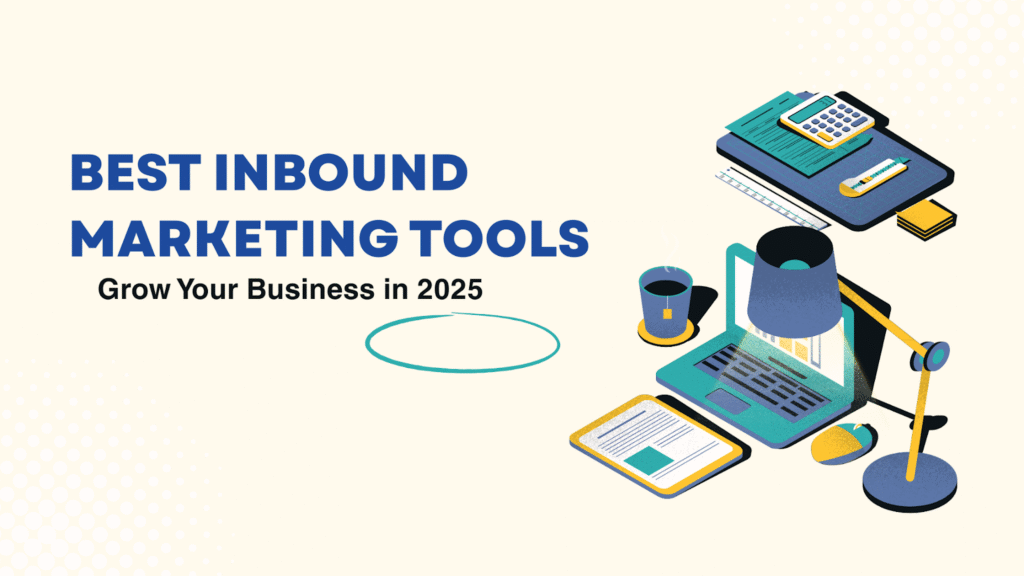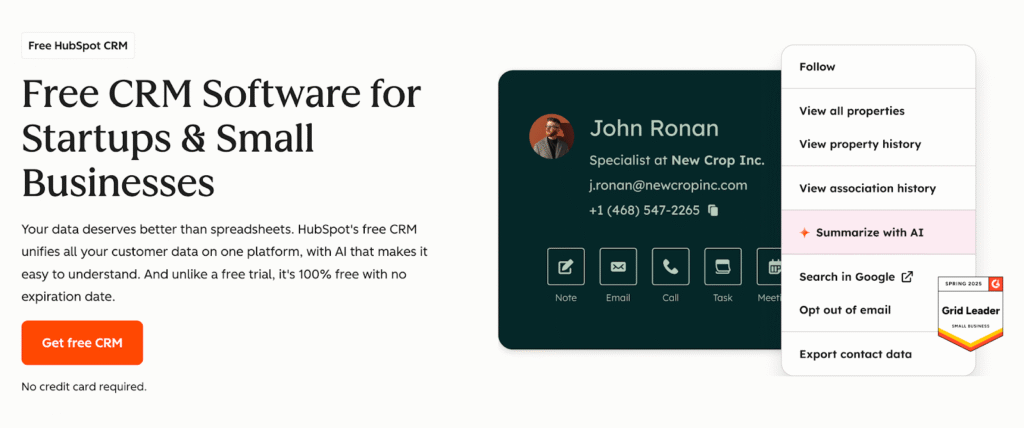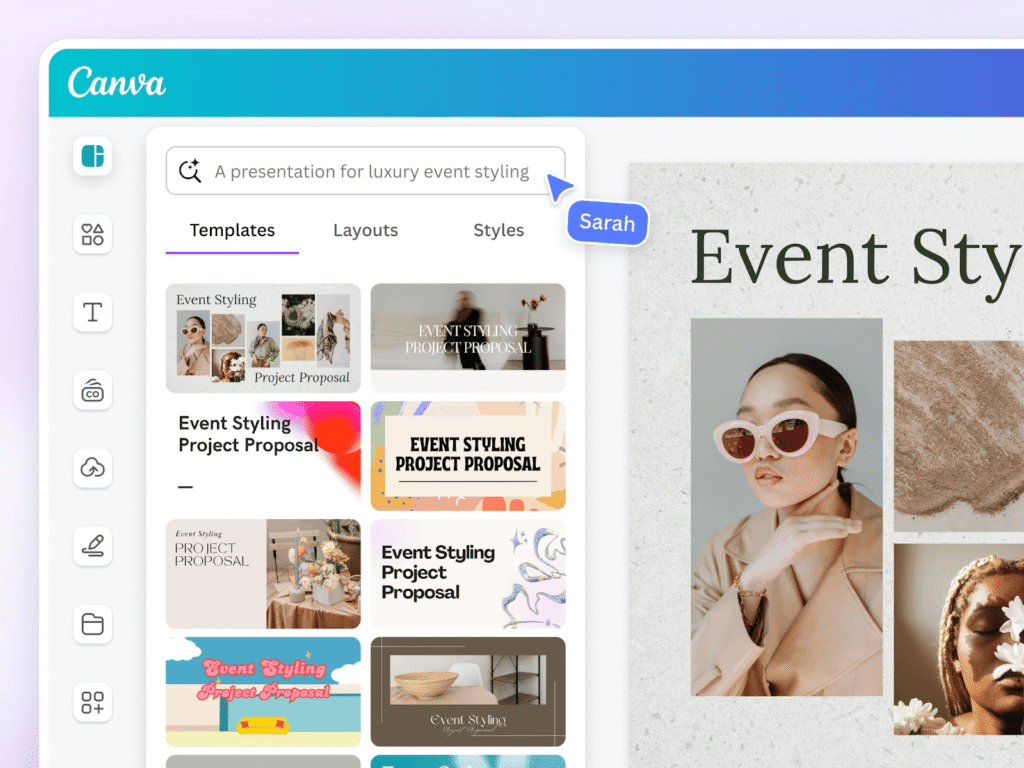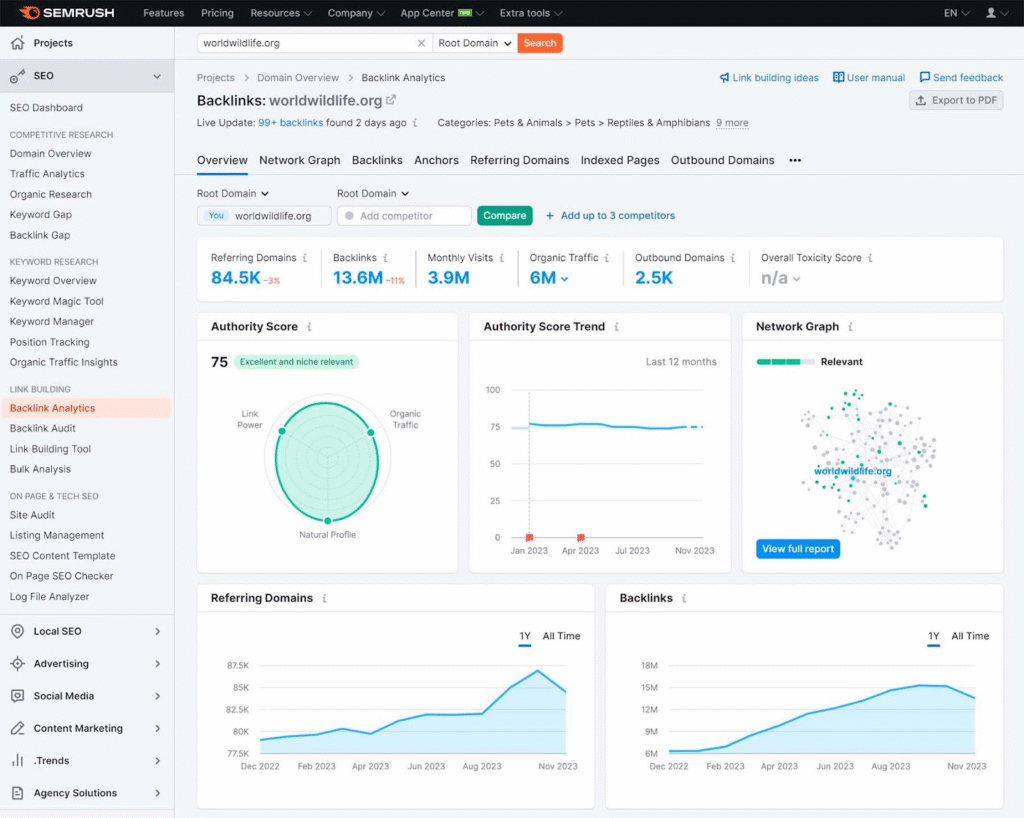Inbound marketing is the foundation of digital growth strategy. Instead of shoving products in advertising, companies attract visitors by developing valuable content, search engine optimization, and lead cultivation through targeted experiences.

But here’s a reality check: without good inbound marketing tools, an even more impressive strategy fails. From CRM technology to SEO platforms, these tools streamline workflows, reveal insights, and optimize ROI.
In this article, we’ll dive into the top inbound marketing tools of 2025, discuss their key features, and explain why they matter for businesses of every size.
- What Are Inbound Marketing Tools?
- 1. CRM & Lead Management Tools
- 2. Content Creation & Management Tools
- 3. SEO & Keyword Research Tools
- 4. Email Marketing & Automation Tools
- 5. Social Media Management Tools
- 6. Analytics & Reporting Tools
- How to Choose the Best Inbound Marketing Tools
- Best Tool Stacks by Business Size
- Future Trends in Inbound Marketing Tools (2025 & Beyond)
- Conclusion
- FAQs
What Are Inbound Marketing Tools?
Inbound marketing tools are software and platforms that help businesses attract, engage, and convert customers through non-intrusive strategies. Instead of pushing ads, these tools focus on creating value, whether through blogs, SEO, social media, or personalized emails.
They help marketers with:
- Content creation and content management (landing pages, images, blogs).
- Search engine optimization (keyword tracking and SEO).
- Customer and lead relationship management (CRM).
- Routine tasks automation (email sequences and workflows).
- Performance monitoring (reports and analytics).
In short, inbound marketing tools simplify sending the right content, to the right people, at the right time, maximizing ROI and engagement.
Recommended Read: What is Inbound Marketing? (Complete Guide)
1. CRM & Lead Management Tools
Customer Relationship Management (CRM) tools must handle, follow up, and cultivate leads. It bridges the gap between sales and marketing and makes sure that no opportunity slips away.
HubSpot CRM

Best for: Small businesses and entrepreneurs (offers a free version).
Features:
- Follow up on all customer contact (calls, e-mails, forms).
- Pipeline deal management.
- It is part of HubSpot’s inbound marketing platform.
Why it matters: HubSpot CRM is inbound methodology-centric, so it’s ideal for content and lead nurturing-reliant businesses.
Salesforce
Best for: Businesses that require customization.
Features:
- Custom dashboards and reports.
- AI-driven lead scoring.
- More sophisticated marketing automation integration.
Why it matters: Salesforce provides scalability and more in-depth analysis, so it’s ideal for bigger businesses with long sales cycles.
Zoho CRM
Best for: Cost-conscious businesses.
Features:
- Automated workflows.
- Email and social media integration.
- AI assistant (“Zia”) for insights.
Why it matters: Affordable and efficient, Zoho CRM allows small businesses to be in control of incoming leads without taking a huge financial hit.
2. Content Creation & Management Tools
Content is the backbone of inbound marketing, Covering Blogging, landing pages, images, and video. The right tools allow the creation to flow smoothly while SEO-optimizing.
WordPress
Best for: Blog and web content.
Features:
- Open-source with thousands of plugins.
- SEO tools such as Yoast.
- Streamlined publishing workflow.
Why it matters: 40%+ of all websites in the world are powered by WordPress and still a leading option for inbound marketers.
HubSpot CMS Hub
Best for: Companies seeking end-to-end inbound integration.
Features:
- Drag-and-drop editing.
- Seamless SEO and adaptive testing integrated.
- Visitor behavior-based personalization.
Why it matters: Native inbound, it integrates with HubSpot CRM to offer seamless lead flow.
Canva

Best for: Non-designers making visualizations.
Features:
- Social media, blog, infographic pre-designed templates.
- Drag-and-drop editing.
- Brand kit for consistency.
Why it matters: Images influence engagement, and Canva brings pro design to everyone.
Piktochart
Best for: Infographics and reports.
Features:
- Data visualization templates.
- Drag-and-drop interface.
Why it matters: Infographics simplify complicated ideas, ideal for inbound content like blog posts and whitepapers.
3. SEO & Keyword Research Tools
Semrush

Best for: Whole SEO and competitive analysis.
Features:
- Keyword research and tracking.
- Competitor backlink audit.
- Site audit and technical SEO fix.
Why it matters: Semrush provides marketers with a 360° overview of SEO, content, and competition.
Ahrefs
Best for: Backlink checking.
Features:
- Deep backlink database.
- Content explorer to discover top-performing topics.
Why it matters: Backlinks remain an upper-ranking factor, and Ahrefs does a brilliant job of monitoring them.
Moz Pro
Best for: Simple SEO optimization.
Features:
- Keyword difficulty and ranking tracking.
- On-page SEO recommendations.
Why it matters: Moz is easy to use and suitable for beginner SEO marketers.
Google Search Console
Best for: Tracking site health and Google crawling.
Features:
- Monitor queries and impressions.
- Detects crawl and indexing problems.
Why it matters: At no cost to most plans, it’s important to track organic performance.
4. Email Marketing & Automation Tools
Email is the hub of inbound marketing. Automation tools ensure the right message is delivered to the right person at the right time.
Mailchimp

Best for: Small businesses and startups.
Features:
- Drag-and-drop email builder.
- Basic automation (welcome emails, drip campaigns).
- Analytics dashboard.
Why it matters: Mailchimp finds a balance between simplicity and price.
ActiveCampaign
Best for: SMBs that require more mature automation.
Features:
- Visual workflows of automation.
- CRM integration.
- AI-based predictive sending capabilities.
Why it matters: ActiveCampaign has strong features at mid-line prices.
HubSpot Marketing Hub
Best for: Advanced organizations with strong personalization requirements.
Features:
- Smart content in emails based on user behavior.
- Advanced workflows and CRM integration.
Why it matters: It balances the email campaigns in conjunction with the overall inbound process well.
Constant Contact
Best for: Small nonprofits and companies.
Features:
- Feature to push events.
- Easy-to-use templates.
Why it matters: Ideal for businesses with little technical savvy.
5. Social Media Management Tools
Social media sites are where your content crosses paths with your viewers. To do them manually is exhausting, tools make it automatic.
Hootsuite

Best for: Teams managing multiple accounts.
Features:
- Schedule on many platforms.
- Brand mentions social listening.
- Collaboration tools for teams.
Why it matters: Time-saving with consistent brand visibility.
Buffer
Best for: Startups and solo marketers.
Features:
- Scheduling and calendar view posts.
- Engagement tracking.
Why it matters: Easy to use, affordable, and ideal for newbies.
Sprout Social
Best for: Companies that value analytics.
Features:
- Deep understanding of the audience.
- CRM-style customer profiles.
Why it matters: Merges social scheduling with customer knowledge.
6. Analytics & Reporting Tools
Inbound marketing is data-driven. Analytics tools track performance and ROI.
Google Analytics 4 (GA4)

Best for: Conversion and website tracking.
Features:
- Event-tracking centered.
- Cross-device data.
Why it matters: Critical to understanding customer journeys.
Looker Studio
Best for: Custom dashboards.
Features
- Connects to many data sources.
- Reports to stakeholders visually.
Why it matters: Presents complicated data as actionable information.
Tableau
Best for: Large organisations with high visualisation needs.
Features:
- More analytical dashboards and reporting.
- Predictive analysis.
Why it matters: Empowering large organisations to make large data-driven decisions.
HubSpot Reporting
Best for: Existing HubSpot users.
Features:
- Located in a marketing hub and CRM.
- Simple campaign attribution.
Why it matters: Offers total inbound performance measurement.
Quick Link: Best CRM for Startups (Complete Guide 2025)
How to Choose the Best Inbound Marketing Tools
- Budget: Feature-to-cost ratio.
- Scalability: Will it grow with your business?
- Ease of Use: Is it easy to onboard your team?
- Integration: Does it play well with current tools?
- Support & Security: Excellent support and secure data storage.
Best Tool Stacks by Business Size
For Startups & Small Teams
- HubSpot Free CRM
- MailerLite (email)
- WordPress + Yoast SEO
- Buffer (social)
For Mid-Sized Businesses
- ActiveCampaign
- Semrush
- Hootsuite
- Hotjar (behavior analysis)
For Enterprises
- Salesforce
- Marketo
- Adobe Experience Manager
- Tableau
Future Trends in Inbound Marketing Tools (2025 & Beyond)
- AI-driven personalization.
- Predictive lead scoring with analytics.
- Voice search SEO optimization tools.
- Inbound tools are moving toward streamlining technology by reducing platform clutter and integrating everything into unified systems.
Conclusion
The key to inbound marketing success lies in bringing together strategy with the right tools. CRMs all the way up to SEO, email, and analytics, these kinds of tools take care of tasks and offer measurable ROI.
Your dream set of inbound marketing tools is based on your size, budget, and goals but spending money on the right ones is worth it in the long run.
Check out our Digital Marketing Page; for more expert tips and guides.
If you’d like to work in AI and SEO, submit your guest post and Write for Us.
FAQs
What are inbound marketing tools?
They are tools for capturing, creating, and qualifying leads with the assistance of SEO, CRM, content, and automation.
What is the best SEO tool for inbound marketing?
SEMrush and Ahrefs are optimal tools for keyword research and competitor analysis.
Does free inbound marketing software exist?
Yes, HubSpot Free CRM, Google Analytics, Canva, and Buffer’s free plan.